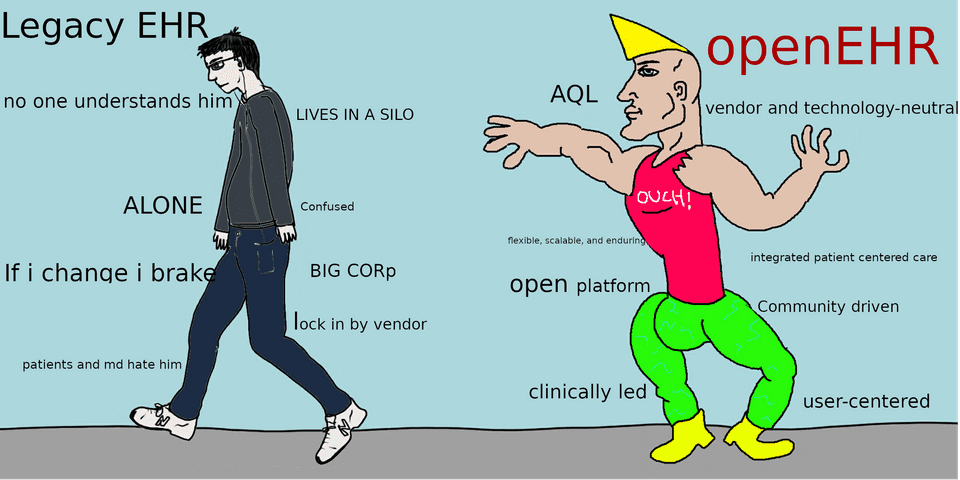OpenEHR is a platform that consists of open specifications, clinical models, and software that can be used to create interoperable healthcare information infrastructure. It is optimized for persistence and query of medical data, with the exchange of the data as a secondary focus. It is designed to separate concerns, between the medical domain experts and electronic health record (EHR) developers. The former contribute to a public body of archetypes these are then combined to form templates. Developers use the templates to create forms and query needed information for display. This allows for a platform that is clinically led and user-centered. Developers then don’t have to dive into medical jargon, and maintaining applications become simpler.
The project is well documented, and there is plenty of information around the internet. But it is a challenging task to wrap once head around it. The information available is dispersed, and it’s hard sometimes to find what you are looking for. Easily one gets lost in the forest and fails to see the big picture. To better understand why openEHR is needed, it is good to first start with the problem it tries to solve [1]. Then, review the overview of the architecture for a panoramic view [2]. Finally view the technical details if you are a developer [3] or the Clinical Models and Clinical Knowledge Manager if you are clinicians [4].
[1] The Health Record – why is it so hard? | T. Beale 2005
[3] OpenEHR dev wiki
More links.
